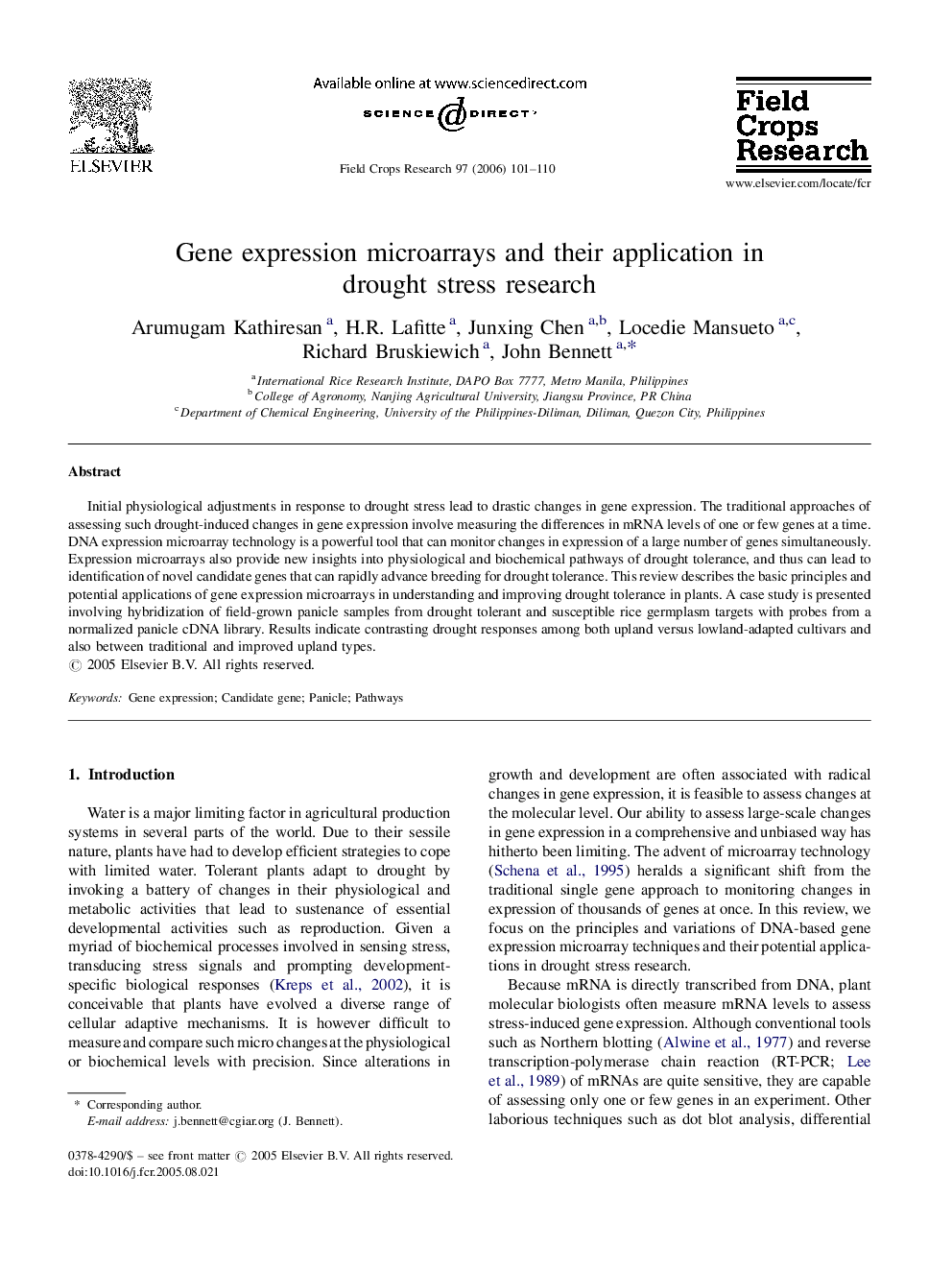| Article ID | Journal | Published Year | Pages | File Type |
|---|---|---|---|---|
| 4511754 | Field Crops Research | 2006 | 10 Pages |
Initial physiological adjustments in response to drought stress lead to drastic changes in gene expression. The traditional approaches of assessing such drought-induced changes in gene expression involve measuring the differences in mRNA levels of one or few genes at a time. DNA expression microarray technology is a powerful tool that can monitor changes in expression of a large number of genes simultaneously. Expression microarrays also provide new insights into physiological and biochemical pathways of drought tolerance, and thus can lead to identification of novel candidate genes that can rapidly advance breeding for drought tolerance. This review describes the basic principles and potential applications of gene expression microarrays in understanding and improving drought tolerance in plants. A case study is presented involving hybridization of field-grown panicle samples from drought tolerant and susceptible rice germplasm targets with probes from a normalized panicle cDNA library. Results indicate contrasting drought responses among both upland versus lowland-adapted cultivars and also between traditional and improved upland types.
